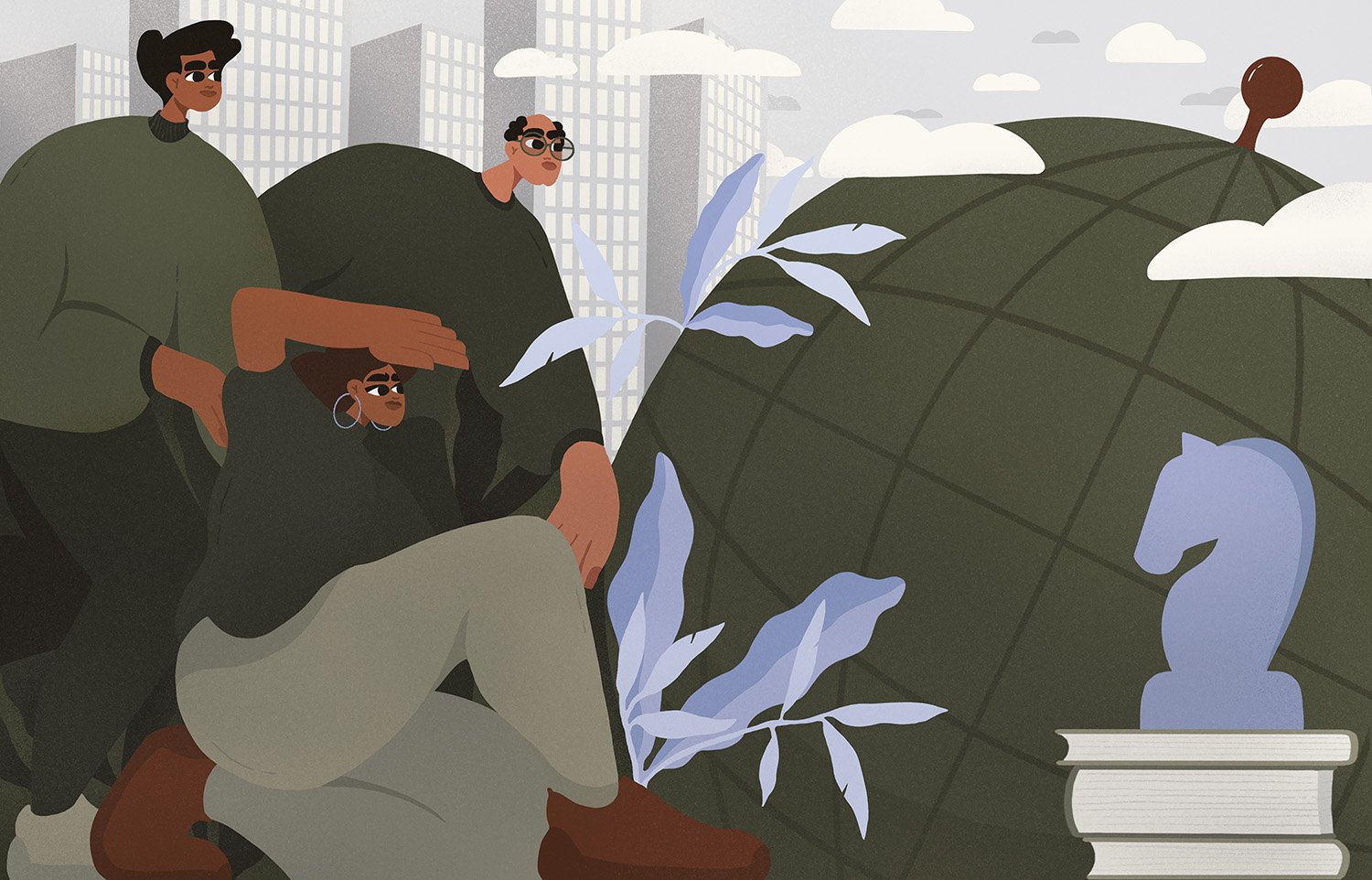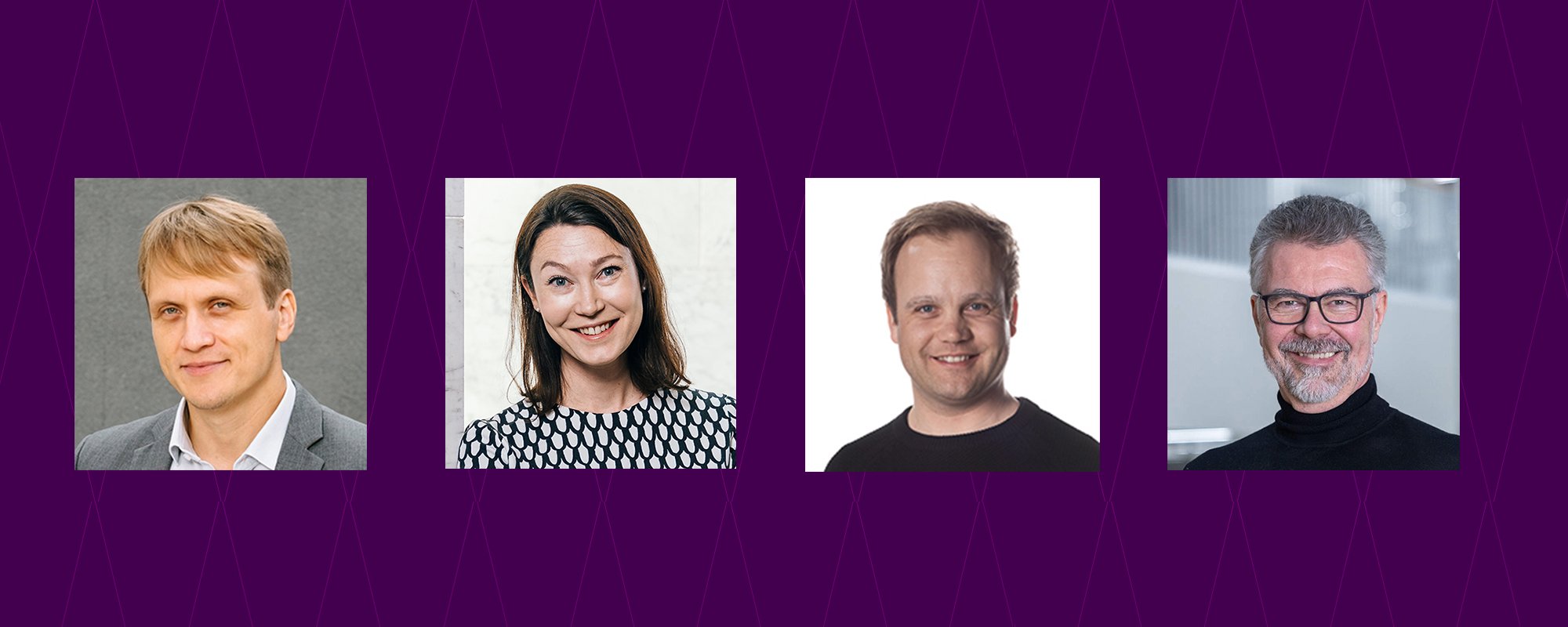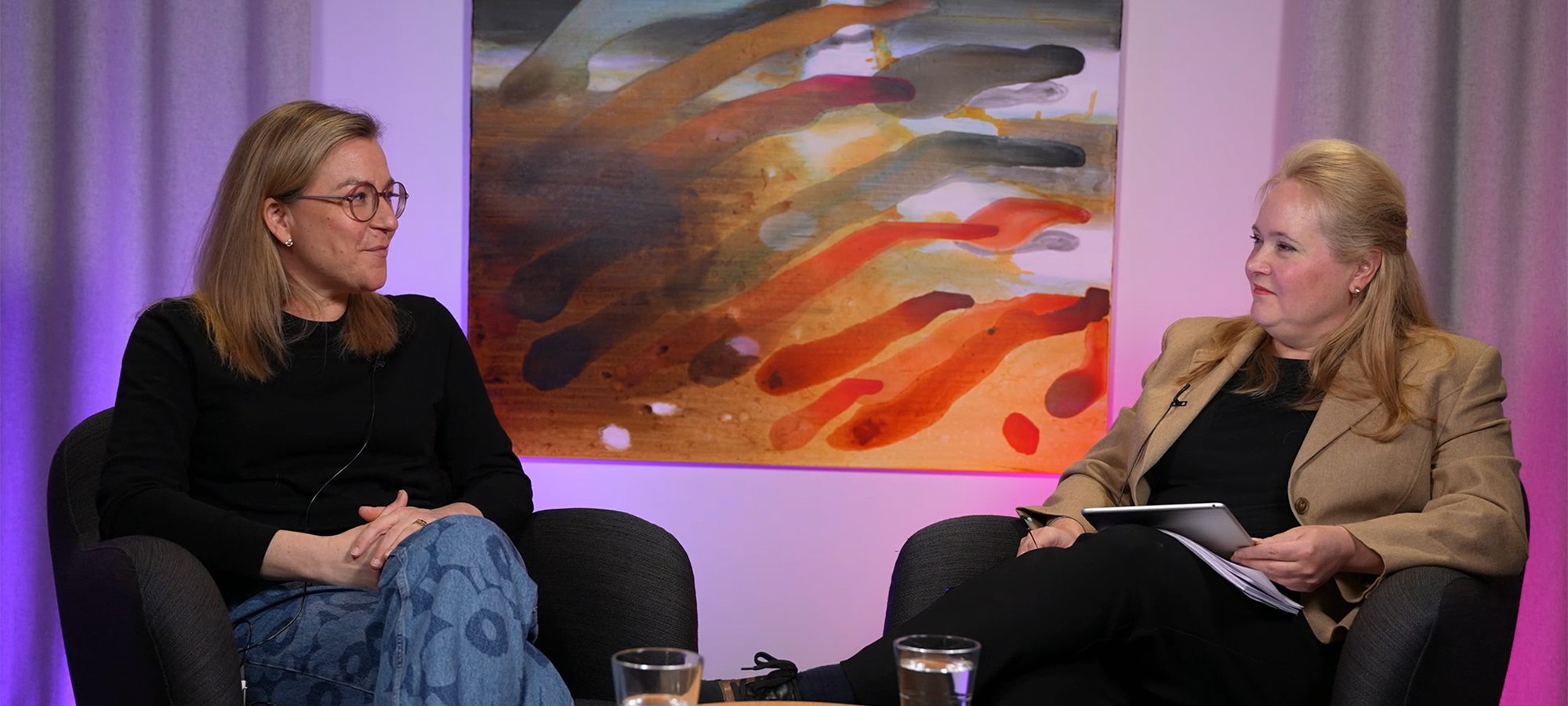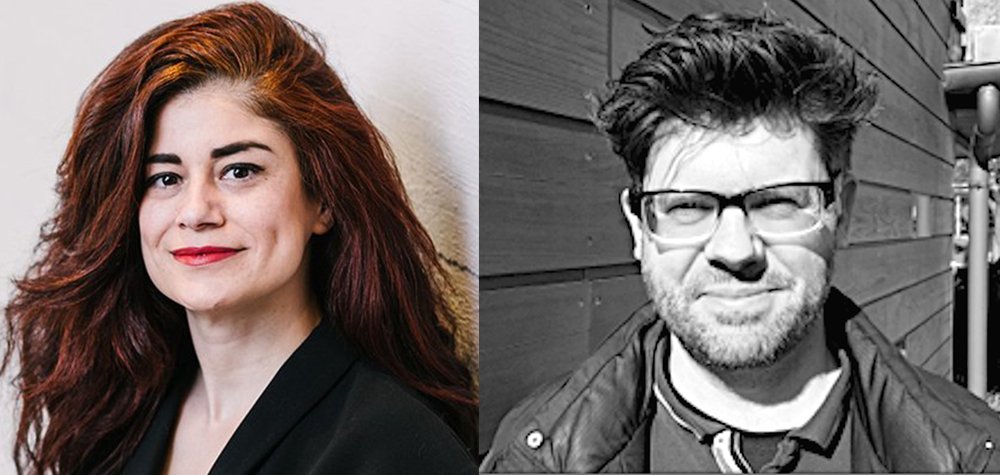Geopolitics Is Back - What Do the New Risks Mean for Businesses?
How can we foresee geopolitical risks and detect them in time? What kinds of skills do we need today? And what about China? We interviewed experts on these topics.
Listen to the article
Annukka Oksanen, 31.10.2024
|Long Forms
Geopolitics is shaking the world harder than it has in decades. We’re saying goodbye to the post-World War II, western-dominated world order.
What do new geopolitical risks mean for companies? We asked the experts.
How Can We Foresee Political Risks?
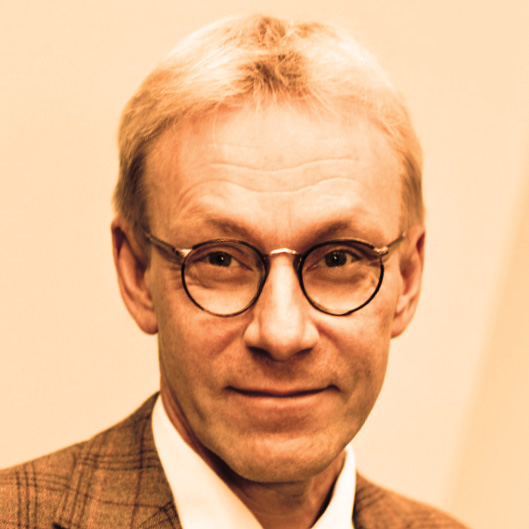
Foresight means peeking behind the forces that shape geopolitics. What endeavors, resources and influence mechanisms will we find? “It’s not just plain politics; it’s also about the economies, innovations and power.”
- Ahti Salo, Professor of Systems Analysis at the Department of Mathematics and Systems Analysis, Aalto University
Lately, it’s felt like the world is stumbling from one crisis to another.
We’re living in a new geopolitical world, said Finland’s new President Alexander Stubb, summing up the status quo in April 2024, during his state visit to Sweden.
We certainly are.
Professor Ahti Salo of Aalto University defines geopolitics as “a rapidly changing playground of many interests”.
Salo is a foresight expert. For decades, he has been researching and advising how organizations can best anticipate future situations in order to be prepared for them.
The aim of foresight is to provide informed views of how the future might look. It’s based on expert evaluations, statistical methods and understanding history.
Good foresight builds resilience, i.e., the ability to prepare for and cope with shocks.
Good foresight is the ability to live with the choices you make and to feel good about them
To Salo, successful foresight does not necessarily mean always hitting the mark. To him, that’s as unrealistic as accurately predicting share prices.
“It’s a bit like asking whether it’s worth taking out insurance. It might well be.”
Salo sees good foresight as the ability to live with the choices you make and to feel good about them.
“Even if new crises arise, at least you’ve tried. There has to be a level of awareness. And decision analysis helps translate this awareness into wise decisions.”
But then, after this, you have to be able to put these decisions into action. The boundary between foresight and strategic planning is that strategic planning involves choosing measures.
Foresight provides the foundations for these choices. Successful foresight is a bit like getting new glasses: you see things more clearly and in a different way to before.
I don’t think the situation can be controlled. And I don’t think this can be squeezed into a mold. But we can gain a deeper understanding of it.
A specific feature of geopolitics is constantly changing multifunctionality. New issues and surprising actors are continually popping up.
Geopolitics is more challenging to predict than even the spread of a virus, for example. A virus at least follows the laws of biology, and its spreading has no malice or any other emotion.
Salo is deliberately calm when he talks about the current geopolitical situation. Scaremongering helps no one.
In business, reflection and procrastination are often seen as a sign of uncertainty and therefore a weakness, because time is money. But now? Wrapping things up quickly isn’t necessarily the best way to do things.
“I don’t think the situation can be controlled. And I don’t think this can be squeezed into a mold. But we can gain a deeper understanding of it.”
Salo advises peeking behind the forces that shape geopolitics. What endeavors, resources and influence mechanisms will we find behind this multifunctionality?
It’s a good question, but one that has no easy answers.
“It’s not just plain politics; it’s also about the economies, innovations and power. For example, grasping a superficial understanding of the Middle East is easy, but what we should have is a deep understanding of its history and culture.”
Anguish disappears, or at least diminishes, when an organization acknowledges its foresight and resilience capabilities
Operating environments are constantly changing, but a company can have a great impact on the competition in its own sector, for example. In geopolitics it’s different: companies are the targets of actions.
“It’s like whitewater rafting. The rapids keep flowing, and you have to think how best to ride them.”
Anguish disappears, or at least diminishes, when an organization acknowledges its foresight and resilience capabilities and systematizes the process.
“This gives our boat a rudder and whatever else we need to navigate the whitewater.”
Salo himself utilizes systems analysis based on mathematical modelling. He uses mechanisms, systems and models to help him create informed descriptions of reality as the basis for decision-making. He has developed portfolio decision analysis, which involves choosing several options from among many. For example, if the task is to decide the order in which Finland’s bridges should be maintained, you have to take into account costs, profitability, safety, the use of resources, and many other factors.
However, modelling only works if the variables and terms are appropriately specified.
Having a devil's advocate can be useful
So much data and information is available that it can often cause overload. So, defining what information is considered relevant, significant, and for example, a weak signal is essential. There are no universally applicable definitions, as relevance depends on the angle from which you view something.
Salo makes whitewater rafting sound like smooth sailing when he describes how foresight is systematically embedded into the organizational structure and made part of the process in the annual plan.
It can be useful to have a devil’s advocate in the organization. You have to have the patience to listen and you also have to have the patience to avoid jargon. Salo doesn’t want to make things too fancy.
If an organization outsources its understanding and buys a report from consultants, the incidence angle may be too narrow, especially if the process of internalizing things is forgotten.
“Ultimately, organizations act according to what they understand. That’s why internalization is important.”
“You have to try to break cognitive illusions, or to at least be aware of them.”
Today’s intensified geopolitics underlines the need for contextual understanding in everything from product development onwards. Risks can go unnoticed if the organization doesn’t understand the existing infrastructure or service environment to which the contraption under development is connected. For example, very few appliances work without electricity.
“You have to understand the interfaces. Everything that needs to fall into place in that environment for the product to work.”
Horizon scanning requires enough pairs of eyes looking in different directions and the courage to question things. Otherwise, we’ll end up like the US in 1961, when when nobody had the courage to tell President John F. Kennedy that attempting an invasion of Cuba might not be wise. A terrible mess and a loss of prestige resulted from all the bootlicking.
“You have to try to break cognitive illusions, or to at least be aware of them.”
To prevent foresight from falling prey to groupthink the process must be structured systematically to ensure that differing views can come to the fore.
Salo explains how one of the evaluation processes he led involved young inexperienced researchers and a CEO level manager who had been granted an honorary title by the President for their remarkable merits in industry.
In a small country like Finland, a young person just starting out on their career might think it’s not worth challenging the views of a such powerful person too insolently. This can be overcome by organizing surveys in which views are expressed anonymously.
What Kinds of Skills and Competencies Do We Need?
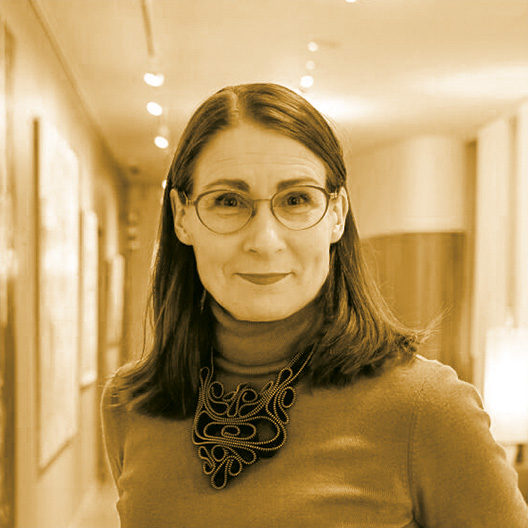
“What if strategy work involved getting to know the cultures of your international operations a little better?” Having employees with widely differing educational backgrounds is also a plus.
- Ulla-Maija Uusitalo, Director of Sales and Account Management, Aalto EE
"General knowledge. I’ll use this old-fashioned term,” says Ulla-Maija Uusitalo when asked what helps in unravelling the complexities of geopolitics.
General knowledge can help you understand the history of peoples and nations, the thought processes of dictators and other rulers, not to mention different cultures.
As Aalto EE’s Director of Sales and Account Management, Uusitalo heads the team working with strategic accounts. Businesses today crave knowledge on geopolitical risks and the changes they can bring.
Social responsibility and DEI are becoming interlinked with geopolitics
“From a risk management perspective, large organizations have already been interested in geopolitics for a long time, but casual interest is no longer enough. The interests of realpolitik are now in such a position that if they grow big enough, they can lead to really serious actions from an organizational point of view.”
In a way it’s a return to the old days, because during the Soviet era, Finland was all about geopolitics and geoeconomics.
“But you couldn’t say that at the time. Or maybe nobody wanted to see it.”
However, it’s not a return to quite the same old days, because back then the unreliability of the Soviet Union was familiar and somewhat, well, reliable.
The Cold War ended when the Soviet Union collapsed in 1991. Francis Fukuyama’s modern classic The End of History and the Last Man was published in 1992. The message of the book, in a nutshell, was that the evolution of history had reached its climax, that is, a combination of liberal democracy and a market economy. It would continue like that because it was believed there were no longer any alternatives.
In the heyday of market liberalism, it was even thought that trade and dynamic markets would be free of borders and political regimes. But they weren’t.
"Do we assess skills from a wide enough angle? Are we aware that a religious studies researcher can
bring value?”
General knowledge can accumulate gradually, and management can emphasize the value of understanding culture and history by highlighting them in the everyday practices of their organization.
“What is discussed, who is heard, who gets a voice? Are all opinions equal? That’s leadership.”
Companies may have operations in many different countries and cultures. In the mishmash of changing social values, we have to consider what is right and wrong in the eyes of the company.
What can a company agree to and what should it not agree to? Sensitivity is important, as the themes of social responsibility and DEI (Diversity, Equity, Inclusion) are becoming interlinked with geopolitics.
Uusitalo also encourages reading fiction.
“What if strategy work involved getting to know the cultures of your international operations a little better?”
It’s also an advantage if employees have widely differing educational backgrounds. For example, are we broad-minded enough when mapping the competences needed in the future? How does this affect recruitment and training practices?
The worst-case risk scenario recently became a reality for many companies that had invested in Russian markets.
“Do we have cultural study skills? Do we dare to genuinely acknowledge that a religious studies researcher can bring us value? Sociology has already crept into businesses.”
“It may sound a bit lofty, but the discussion in companies about decisions in their own sectors could be a degree richer and use slightly more sources of information than they currently do. Slightly greater macro-level trajectories should also be placed on the agenda. That’s what this all boils down to.”
And certain aspects of geopolitics have a concrete impact on the daily lives of every employee. For example, today’s organizations must have an extensive understanding of cybersecurity as well as the skills needed to identify misinformation.
Uusitalo compares geopolitics to customer-centricity. That was also something everyone talked about before it actually rose onto the agenda of every management team. Now we talk about customers on a regular basis, as we should do about geopolitics.
What about China?
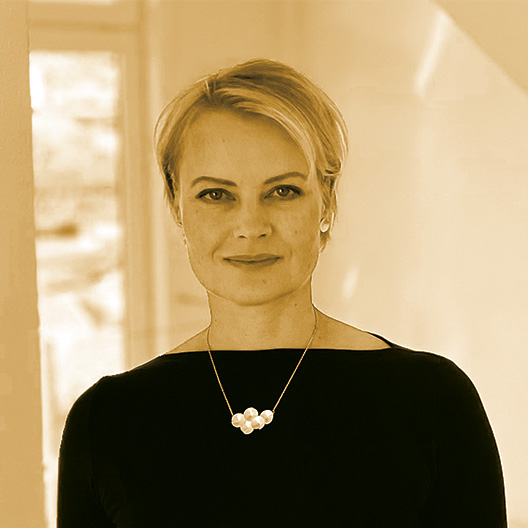
China is already a challenge in terms of its time perspective. Whereas Western democracies operate on a four-year electoral cycle, in China goals may be a hundred years in the future.
- Tuuli McCully, Senior Economist, the Bank of Finland Institute for Emerging Economies
Even if at first glance a company doesn’t seem to have a direct link to China, the country must be taken into account.
“When looking at value added statistics, it’s challenging to find any good without at least some input from China,” claims economist Tuuli McCully.
The pandemic made the world realize how dependent it is on China and how integrated production chains are. Before the pandemic, we mainly only saw the advantages of integration. Because China is so big and because it’s everywhere, it’s impossible to be completely free of it.
Instead of decoupling we need derisking, ways to mitigate the China risk.
"You can't just act in a strictly Western way"
The reason for the strained relations between China and the US is China’s desire to be the world’s technological powerhouse, which the US sees as a threat to its national security. McCully doesn’t believe that the US will be able to prevent China from becoming self-sufficient in terms of technology, no matter how many tariffs it imposes.
But it can slow down its growth.
McCully, whose area of expertise is China, has worked as the Principal Economist for the Asia-Pacific region in a major Canadian bank, Scotia Bank.
In addition to Toronto, she has also worked in Singapore. McCully’s doctoral thesis dealt with China’s deepening integration into the global economy and financial markets, and China’s relations with the world economy.
The EU is not as strict about its relations with China as is the US. The EU understands that China is an economic competitor, but stresses that the country is also such an important partner that it would not be able to manage without it. An example of this is the green transition.
“I still wonder how they can think about the world from that viewpoint. You’d have to be a sinologist to understand China even better.”
“It’s also extremely important to understand that China is a systemic competitor that promotes its own value system and social model.”
Instead of a liberal system based on the individual, in China everything starts from the common good.
“I still wonder how they can think about the world from that viewpoint. You’d have to be a sinologist to understand China even better.”
The challenge already arises in China’s time perspective. Whereas Western democracies operate from a four-year electoral perspective, in China, goals can be a hundred years in the future.
McCully has been asked whether it’s worth going to China with western values anymore. Big companies should definitely be prepared to have to deal with the Party.
“So how do we navigate it, how can we find a balance? You just can’t act in a strictly Western way.”
The China risk has no straightforward definition
Companies’ efforts to manage the China risk are most evident in the restructuring of production.
The China Plus One strategy means that companies move their production chains to other countries in addition to China. Friendshoring in turn means moving production to friendly countries.
The countries of South-East Asia have seen this as a “great opportunity”. They continue to integrate with each other while the rest of the world is turning inwards. This is why the China plus three strategy has become increasingly popular. It involves moving parts of tthe production chain to several ASEAN (Association of South East Asian Nations) countries instead of just one.
The China risk has no straightforward definition. McCully list the different risks within it.
First, there’s the macroeconomic China risk. If a country’s economy is highly integrated into or otherwise dependent on China, it will follow China’s economic cycles. McCully sees no major global macro-risk in China because, first, the country’s state-centric economic system can deal with serious growth problems when needed, and second, Chinese capital markets are still quite isolated from global capital markets.
Moreover, a slowdown in China’s economic growth is normal, as growth typically slows down when an economy is developing.
“Growth then comes more from productivity, and not from increased investment. However, China needs to grow fast because it still has millions of people whose standards of living need tobe improved.”
Then there’s the sectoral risk. For example, if a company uses highly advanced technology, it can become a geopolitical pawn.
If a large part of a company’s revenue comes from China, it’s a market risk.
And if a company’s production is highly dependent on China for supply chains, this is a production risk.
There’s also an image risk, as many geopolitical themes are linked to values.
An image risk can arise from, for example, cotton yarn. China is the world’s largest producer of cotton yarn: it accounts for around one fifth of the world’s cotton yarn production. The majority of China’s production is in Xinjiang , where it is suspected that cotton is being produced by forced-labor Uyghurs. Does this make your company’s value chains squirm?
And then there’s Taiwan. Taiwan Semiconductor Manufacturing Co. produces about half of the world’s semiconductors, specifically advanced semiconductors, and without semiconductors the world would grind to a halt.
“For the time being, it seems that both sides, China and Taiwan, want to keep a peaceful balance, as open conflict would benefit neither of them. But you never know, Chinese President Xi Jinping may want to leave some sort of legacy, for example.”
How to Detect Geopolitical Risks in Time?
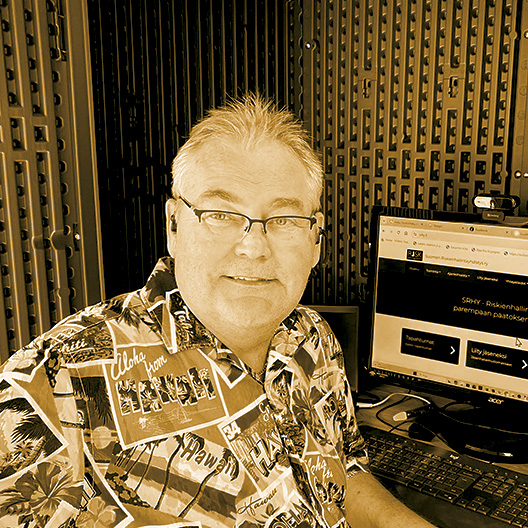
Risk management should cover the entire company, as geopolitics has no respect for organizational structure. Its effects radiate throughout the company.
- Lassi Väisänen, Managing Director, Finnish Risk Management Association, and risk management entrepreneur
Business cannot be conducted without risks.
To be successful, a company needs to identify its risks and find ways to avoid or eliminate them. Some risks you just have to learn to live with, or you can try to use them to your advantage.
“In the past, the mindset was: you take care of the risks, we’ll take care of the business,” Lassi Väisänen describes the traditional position of risk management as a separate support function.
"Risk management now involves breaking the silos that have formed.”
But this no longer works. The whole company is responsible for risk management.
“There’s surprising fragmentation in large organizations, and small empires can arise within these. Risk management now involves breaking the silos that have formed.”
Risk management needs to be spread throughout the company, because geopolitics has no respect for organizational structures; its effects radiate throughout the company, from a side loop in the production chain, through the corporate culture, to finance, cashflow and profit. So, what is at stake is the continuity of the business, or ultimately the existence of the company.
“An organization may have excellent risk depart people, but this won’t help if it’s not internalized in the rest of the organization.”
Standards and certificates are good, but they are only tools
Organizations systematize their risk management with standards, such as ISO31000, and certificates. Customers and other reference groups often demand these standards, because they believe that by doing so, they are managing their own risks.
For Väisänen, systematization is a basic requirement for risk management. Risk management works when the principles, framework and process are clear and consistent.
Standards and certificates are good, but they are only tools, as are risk maps and risk lists. However, Väisänen believes that too much standardization is problematic.
“You have to remember that they are compromises, to suit everybody. You need to understand the difference between your own needs and what the standard requires. So, do we change our own operations to meet the requirements of the standard or do we understand how to apply the standard to our own strategy and operations?”
It’s easy to say that the Middle East situation is risky, but it’s much more difficult to analyze what risks it poses specifically for your business.
Väisänen thinks it is good that the recommended ISO31000 standard tells us what should be done instead of telling us how to do it. So, in a way, it forces the company to adapt its approaches. The standards and certificates that companies buy in their quest for security can become quite a tangled mess.
Väisänen has noticed that organizations have a tendency to raise issues from risk maps and risk lists as if they were slogans, but then leave them unaddressed. This makes it hard to get a grip on risks. For example, there is an incredible amount of general-level information on the effects of climate change, but analyzing its impact on your own business is not easy. The same applies to geopolitics.
It’s easy to say that the Middle East situation is risky, but it’s much more difficult to analyze what risks it poses specifically for your business.
The findings should be packaged into an analyzable format and then combined to form a broad over view of the risks. Then you can think about actions, communication and implementing measures.
Buying software and collecting data won’t help if you can’t get people to sit at the same table to talk. Data and artificial intelligence can pave the way for the kind of systematization Väisänen calls for.
For example, companies typically use spot checks to see whether sustainability measures are being carried out, but this process could be systematized using data and AI.
Operational risks are followed by risks related to legal issues
A company usually understands the mechanisms and culture of the society in which it is established. A typical risk in business is investing abroad.
Once abroad, the level of understanding drops, even collapses. A company places itself at risk if it decides to make a substantial investment without having a comprehensive understanding of local conditions.
“Is it a hostile market? You’ll encounter organizational cultures and all sorts of other things.”
It’s important to be able to assess, for example, how reliable financial figures are. If the figure given is 110, what if it’s really only 90? How is this reflected throughout the company, how does it affect finances, how does it affect the balance sheet?
Operational risks are followed by, for example, risks related to legal issues. If they can’t be curbed, you must address the question of whether operating in the foreign market is still in line with the company’s strategy. If it’s not, you need to think about what you can areas bring back home. Or will the money be left abroad?
This kind of risk scenario recently became reality for many companies that had invested in Russian markets. After bad experiences such as these, the importance of geopolitics for business will not be forgotten.
This long form article was first published in the Aalto Leaders' Insight magazine's issue number 12 in June 2024. Do you want to read more similar articles? You can find all our long forms here! You can read more about Aalto EE's programs on security and leadership here.
















